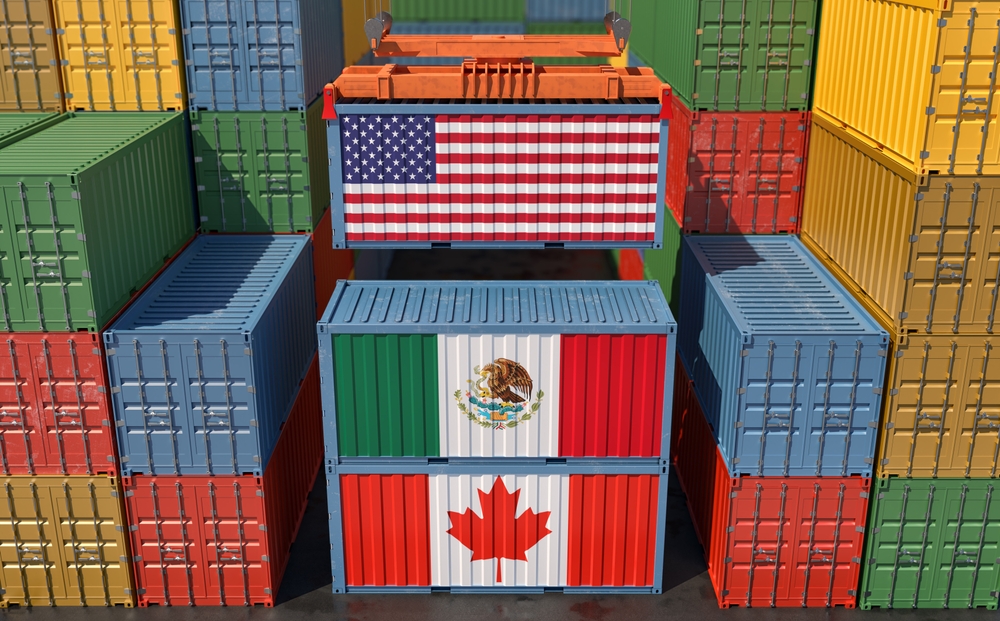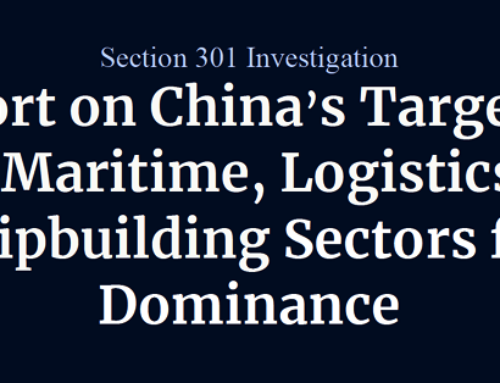UPDATED MARCH 3, 2025 AT 4:28 PM CST:
U.S. Customs and Border Protection (CBP) has issued Federal Register Notices detailing tariff implementation for imports from Canada and Mexico, effective March 4, 2025.
These notices confirm how goods will be classified under the Harmonized Tariff Schedule (HTSUS) and clarify de minimis treatment under 19 U.S.C. 1321:
Canada
- CBP confirmed tariff treatment previously announced for Canadian imports.
- Goods subject to the 25% tariff will enter under subheading 9903.01.10.
- Energy imports, subject to a 10% duty, will enter under subheading 9903.01.13.
- Goods exempt as donations will enter under subheading 9903.01.11.
- Goods exempt as informational materials will enter under subheading 9903.01.12.
- De minimis treatment remains available for otherwise eligible shipments, including goods classified under 9903.01.10 and 9903.01.13.
Mexico
- Goods from Mexico will now enter under subheading 9903.01.01 and be subject to a 25% duty.
- Goods exempt as donations will enter under subheading 9903.01.02.
- Goods exempt as informational materials will enter under subheading 9903.01.03.
- De minimis treatment remains available for otherwise eligible shipments, including goods classified under 9903.01.01.
NEW U.S. TARIFFS ON CANADA AND MEXICO MOVE FORWARD AFTER DELAY
The U.S. tariffs on imports from Canada and Mexico, originally announced alongside those on China, are now taking effect on March 4, 2025 after a one-month delay granted by the White House. The pause allowed both countries time to address U.S. demands related to border security and trade enforcement. Now, with the delay period over, the administration has confirmed that tariff collection on Canadian and Mexican imports will proceed under revised enforcement policies.
While qualified shipments under the de minimis threshold remain temporarily exempt, this benefit is expected to end once U.S. Customs and Border Protection (CBP) and the Department of Commerce finalize a full enforcement framework.
BACKGROUND: U.S. TARIFFS ON CANADA AND MEXICO
The tariffs were originally announced in Executive Orders 14193 (Canada) and 14194 (Mexico), issued on February 1, 2025. These measures introduced a 25% duty on most imports from both countries, along with a 10% duty on certain energy products from Canada.
The White House later granted a temporary delay to allow for further discussions on trade enforcement, Customs cooperation, and border policies. With the grace period now over, full enforcement is planned to begin.
CANADA: NORTHERN BORDER TARIFF IMPACTS
- 25% tariff on most imports from Canada
- 10% tariff on energy products
- Policy linked to broader U.S. trade enforcement efforts
- De minimis exemptions still apply to imports that are otherwise eligible for the exemption but may be revoked based on future policy reviews
MEXICO: SOUTHERN BORDER TRADE IMPACTS
- 25% tariff on most imports from Mexico
- Focus on trade and border policy measures
- De minimis exemptions remain available for items that are otherwise eligible for the exemption but could be subject to policy changes
- The Department of Commerce and CBP will determine when full tariff enforcement infrastructure is in place
WHAT THESE TARIFFS MEAN FOR U.S. IMPORTERS
The temporary de minimis treatment provides short-term flexibility, but businesses should not rely on it as a long-term solution. Companies importing goods from Canada and Mexico must prepare for a future where these shipments may face full tariff enforcement. Businesses operating within Foreign Trade Zones (FTZs), bonded warehousing, and USMCA-based trade frameworks should closely monitor how these tariffs impact cost structures and operations.
Businesses impacted by the new U.S. tariffs on Canada and Mexico should consider one or more of the following strategies:
- Bonded Warehousing: Leveraging bonded warehouses allows importers to defer duties while monitoring regulatory changes.
- Supplier Diversification: Reassessing supplier networks and exploring alternative sourcing outside affected countries can reduce tariff exposure.
- Enhanced Trade Compliance Measures: Ensuring accurate HTS classification, valuation, and country-of-origin declaration will be critical to mitigate risk.
Stay up-to-date on freight news with Green’s Weekly Freight Market Update by following us on LinkedIn. For continuous updates, make sure to check out our website at greenworldwide.com.




